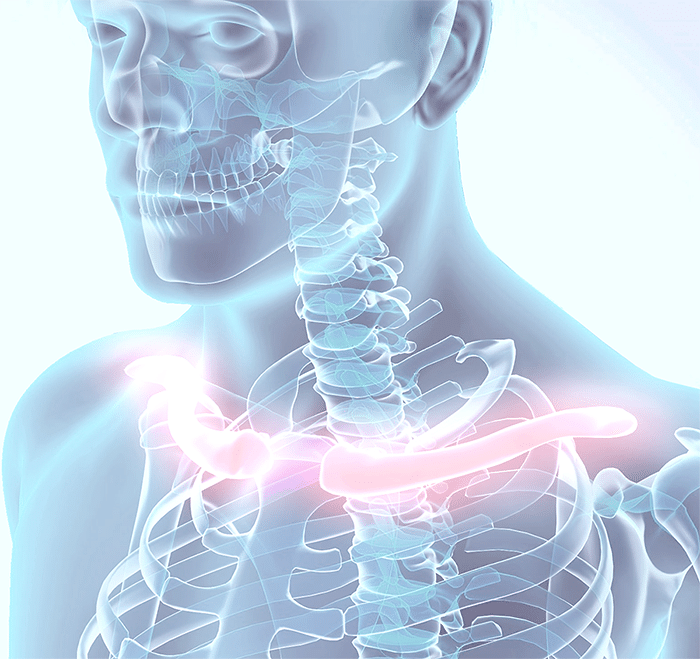
A clavicle fracture (also called a collarbone fracture, or a broken collarbone) is a typical sports injury. Often, this occurs when an athlete gets hit or falls on their shoulder. Although, despite the name, the collarbone isn’t actually in your neck. Rather, it’s one of the two long thin bones which connect your shoulder blades and breastbone.
A fractured clavicle is fairly common and represents up to 5% of all adult fractures. Although common in adults, a clavicle fracture is more common in children, typically making up 8% – 15% of all child fractures. Each fracture is usually different. Although it typically occurs in the middle of the collarbone. And normally this is due to the instability of the ligaments and muscles.
Also, see: Top Common Broken Bones
Clavicle Fracture Causes
Typically, when a clavicle fracture occurs it is due to a hit or fall. This could happen from a fall on your hand or arm, which then forces impact up to your collarbone, making it snap. It is also common for a collarbone to fracture during a car accident.
The clavicle doesn’t fully develop until around the age of 20. For this reason, it is more common for a child to experience a clavicle fracture.
It’s common for a collarbone fracture to occur from contact sports, such as football and hockey. This is due to the likelihood of a fall which usually occurs at high speeds. Skiers and skateboarders are also at risk for injury due to the downward trajectory motions.
Sadly, newborns can also have their clavicle fractured during delivery. It’s important for parents to keep a close eye on the infant to notice if the baby has any signs or symptoms of a fracture. For instance, crying out at a touch.
Symptoms of a Broken Collarbone
When a broken collarbone occurs you will typically endure a lot of shoulder pain and have trouble moving the arm without causing more pain.
Additional symptoms may include:
- Swelling
- Stiffness
- Inability to move the shoulder
- Tenderness
- Bruising
- A bump or raised area over the break
- Grinding or crackling noise (when the arm is moved)
- Forward sagging of the shoulder
Clavicle Fracture Treatment
Non-Surgical Treatment
Conservative treatment should be recommended before surgical treatment options are brought out on the table, such as:
- Medication: A doctor may prescribe over-the-counter medicine such as ibuprofen or acetaminophen.
- Ice & Heat A physician may recommend ice packs to help with pain for the first few days. Then thereafter it’s normal to apply heat for the pain.
- Embolization: The injured arm is typically immobilized in a sling. Keeping the bone in place. It’s important to restrict movement until your bone has healed.
- Physical Therapy: A doctor or a physical therapist may show you gentle exercises. Exercises prevent stiffness as your bones are healing. Once your bones have healed, your doctor can advise a rehabilitation program. This will help your arms gain strength and flexibility.
Surgical Treatment of a Broken Collarbone
After conservative treatment methods have been exhausted, surgical are explored, such as:
Plate Fixation: This procedure involves attaching a plate with screws to the outside of the bone. The procedure hardware is normally left in place. Although, it occasionally causes irritation from seatbelts or backpack straps, because the clavicle is prominent and close to the skin’s surface.
Intramedullary Fixation: The surgical procedure entails inserting a long pin into the center of the bone. It typically involves using a small incision and causes fewer interruptions to the surrounding soft tissues.
Patients should consult with their surgeons to determine the right approach. If you are experiencing a clavicle fracture or shoulder related issues, call us today at 888-409-8006 for a consultation. Our top specialists are here to help. SOC offers locations throughout South Florida.
